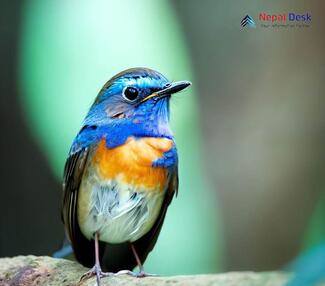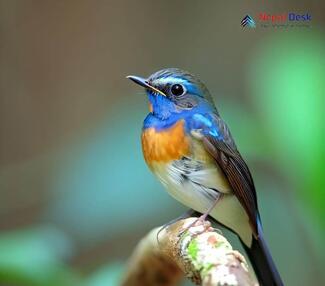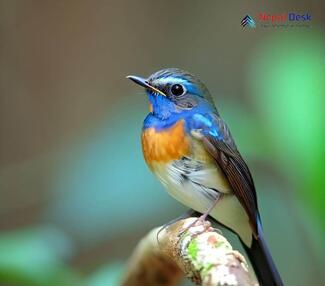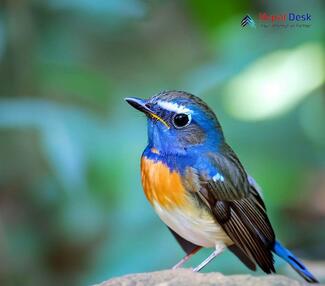Nestled in the heart of the Himalayas lies the stunning country of Nepal, home to a vast array of diverse and intriguing wildlife. One such little gem residing within Nepal's dense forests is the Blue-Throated Flycatcher (Cyornis rubeculoides). This small, enchanting bird has captivated birdwatchers and nature enthusiasts alike with its striking appearance and fascinating behavior.
The Beauty of Blue-Throated Flycatchers
The Blue-Throated Flycatcher is a small passerine bird with a remarkable coloration. Males flaunt a vivid blue plumage on their head and back, while their throat and breast display a contrastingly deep orange hue. Females, on the other hand, don more muted tones – boasting subtle shades of greyish-brown with hints of blue feathers. Both sexes exhibit distinctive chestnut-colored patches on their wings, adding an extra touch of allure to these captivating creatures.
Habitat and Distribution
Blue-throated Flycatchers primarily inhabit subtropical or tropical moist lowland forests and montane forests in Nepal. They favor dense undergrowth as well as streamside vegetation, making them a somewhat elusive birds for the untrained eye to spot. These winged wonders can be found throughout the foothills of the Himalayas up to altitudes of around 7,500 feet.
Diet and Feeding Habits
True to their name, Blue-throated Flycatchers have an appetite for insects – particularly flying insects! These agile birds procure their meals with remarkable precision by effortlessly darting through the air or snatching unsuspecting prey directly off the foliage. Occasionally, they may also consume berries or small fruits to supplement their insect-driven diet.
Mating Habits
When it comes to courtship, male Blue-throated Flycatchers indulge in melodious and persistent singing to woo prospective females. The bird pairs share an endearing bond, working together to build a neat, cup-shaped nest that is artfully concealed within the dense foliage of their preferred habitat. Parent birds can be observed attentively tending to their eggs and feeding their fledglings until they are old enough to venture into the world.
Conservation Efforts
As deforestation continues to escalate globally, it poses a significant threat to wildlife such as the Blue-throated Flycatcher. Nepal's ongoing commitment to conserving its natural habitats allows species like this remarkable bird to continue thriving within its borders. For those seeking a glimpse at this fascinating creature, eco-tourism opportunities showcasing Nepal's rich biodiversity can provide a responsible and engaging experience.
In conclusion, the Blue-Throated Flycatcher serves as a shining example of Nepal's unique and vibrant wildlife. With continued conservation efforts and responsible eco-tourism, future generations can enjoy the captivating beauty of these diminutive, yet unforgettable birds.




